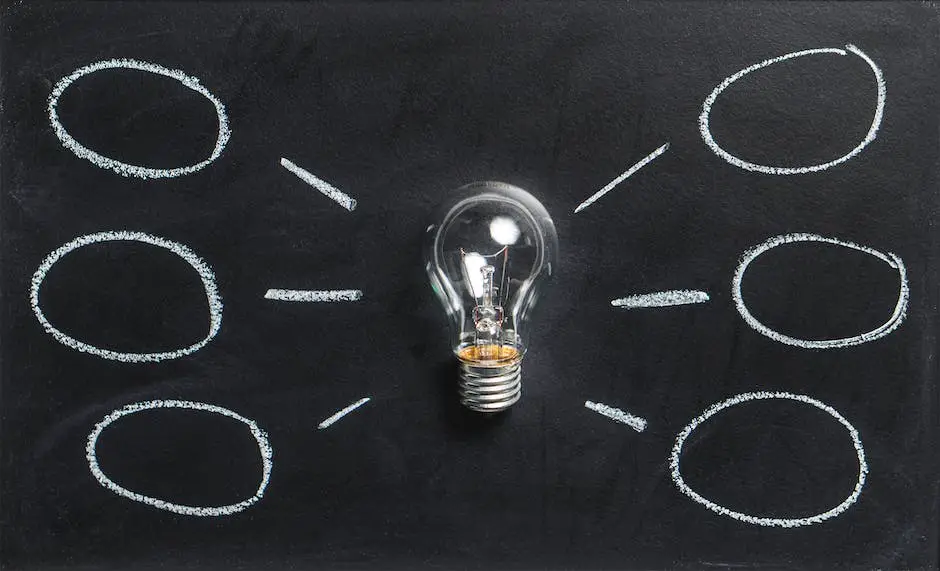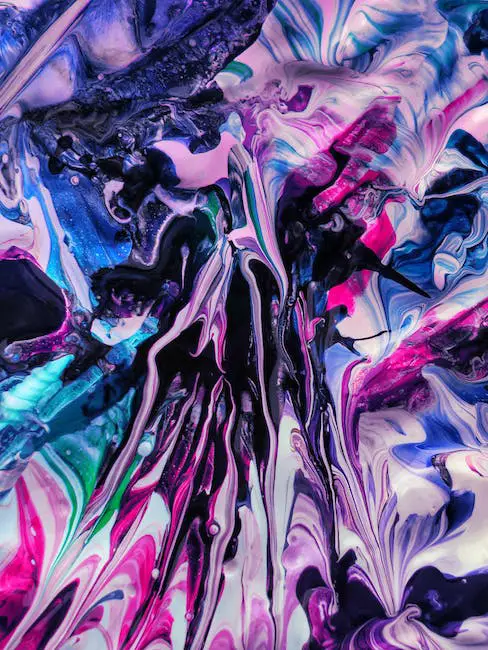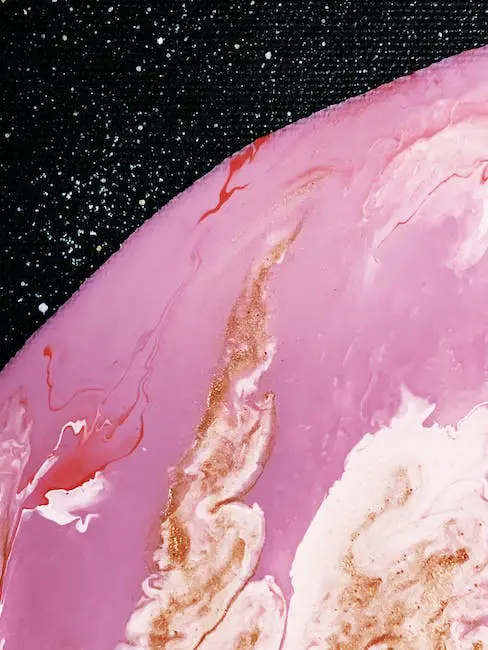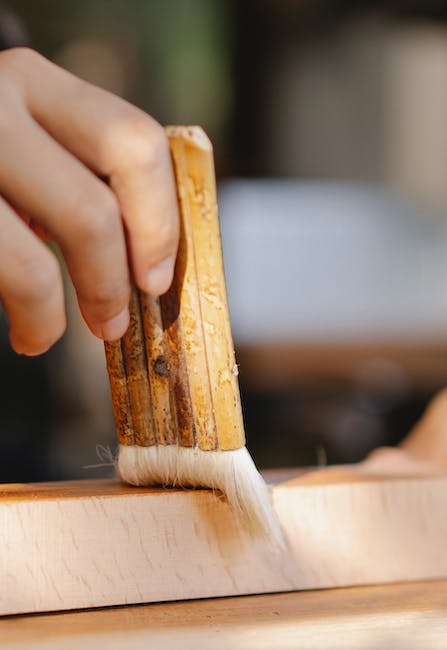-
Table of Contents
- Introduction
- The Environmental Impact of Chalk: Is it Biodegradable?
- Exploring the Biodegradability of Chalk: A Scientific Analysis
- Chalk Alternatives: Eco-Friendly Options for Writing and Drawing
- The Importance of Choosing Biodegradable Chalk for Outdoor Activities
- Sustainable Chalk Production: How Manufacturers Can Reduce Environmental Impact
- Q&A
- Conclusion
Introduction
Chalk is a soft, white, porous sedimentary rock that is commonly used for writing or drawing on various surfaces. It has been used for centuries as a writing tool and is still widely used today in schools, offices, and other settings. However, with the increasing concern for the environment, many people are wondering whether chalk is biodegradable or not. In this article, we will explore the biodegradability of chalk and its impact on the environment.
The Environmental Impact of Chalk: Is it Biodegradable?
Chalk is a common writing tool that has been used for centuries. It is a soft, white, porous sedimentary rock that is composed of calcium carbonate. Chalk is widely used in schools, offices, and homes for writing, drawing, and marking on various surfaces. However, the environmental impact of chalk has been a topic of concern for many people. One of the questions that arise is whether chalk is biodegradable or not.
Biodegradability is the ability of a substance to break down naturally into harmless substances by the action of microorganisms such as bacteria, fungi, and algae. Biodegradable substances are considered environmentally friendly because they do not accumulate in the environment and do not cause harm to living organisms. Therefore, it is important to know whether chalk is biodegradable or not to assess its environmental impact.
Chalk is a natural substance that is formed from the remains of marine organisms such as plankton and shells. It is a sedimentary rock that is formed by the accumulation of calcium carbonate over millions of years. Chalk is a soft rock that can be easily ground into a fine powder, which is used for writing and drawing. Chalk is also used in agriculture as a soil conditioner and in construction as a building material.
Chalk is generally considered to be biodegradable because it is a natural substance that can be broken down by microorganisms. When chalk is exposed to moisture, it can absorb water and become a paste. This paste can be easily broken down by microorganisms, which convert it into harmless substances such as carbon dioxide and water. Therefore, chalk is not considered to be a significant environmental hazard.
However, there are some concerns about the environmental impact of chalk. One of the concerns is the use of synthetic additives in some types of chalk. Some manufacturers add synthetic materials such as polymers and resins to chalk to improve its performance and durability. These additives can make chalk less biodegradable and can increase its environmental impact.
Another concern is the disposal of chalk waste. Chalk dust and residue can accumulate in the environment and can cause respiratory problems for humans and animals. Chalk dust can also cause soil and water pollution if it is not disposed of properly. Therefore, it is important to dispose of chalk waste in a responsible manner.
In conclusion, chalk is generally considered to be biodegradable because it is a natural substance that can be broken down by microorganisms. However, the use of synthetic additives in some types of chalk can make it less biodegradable and can increase its environmental impact. Therefore, it is important to choose environmentally friendly chalk that does not contain synthetic additives and to dispose of chalk waste in a responsible manner. By doing so, we can minimize the environmental impact of chalk and protect our planet for future generations.
Exploring the Biodegradability of Chalk: A Scientific Analysis
Chalk is a soft, white, porous sedimentary rock that is commonly used for writing and drawing. It has been used for centuries as a writing tool, and it is still widely used today in schools, offices, and homes. However, there has been a growing concern about the environmental impact of chalk, and whether it is biodegradable or not.
Biodegradability is the ability of a substance to be broken down by natural processes into simpler compounds that can be absorbed by the environment without causing harm. In the case of chalk, the question is whether it can be broken down by natural processes and whether it poses a threat to the environment.
Chalk is made up of calcium carbonate, which is a naturally occurring mineral that is found in rocks, shells, and the skeletons of marine organisms. Calcium carbonate is not toxic to the environment, and it is commonly used in agriculture as a soil conditioner and in the production of cement.
However, the biodegradability of chalk depends on how it is used and disposed of. If chalk is used for writing or drawing on a surface, it can be easily wiped off or erased, and it will not pose a threat to the environment. However, if chalk is left on the ground or in the water, it can become a problem.
When chalk is left on the ground, it can be washed away by rain or blown away by the wind. This can cause it to end up in rivers, lakes, and oceans, where it can harm aquatic life. Chalk can also be ingested by animals, which can cause blockages in their digestive systems.
In addition, chalk dust can be harmful to human health if it is inhaled. Chalk dust can cause respiratory problems, especially for people with asthma or other respiratory conditions. This is why it is important to use chalk in a well-ventilated area and to avoid inhaling the dust.
To determine the biodegradability of chalk, scientists have conducted experiments to see how it breaks down in different environments. In one study, researchers placed chalk in a compost bin and monitored its decomposition over a period of several months. They found that the chalk broke down into smaller particles, but it did not completely decompose.
In another study, researchers placed chalk in a simulated marine environment and monitored its degradation over a period of several weeks. They found that the chalk broke down into smaller particles, but it did not completely dissolve. The researchers concluded that chalk can be broken down by natural processes, but it may take a long time to decompose.
Overall, the biodegradability of chalk depends on how it is used and disposed of. If chalk is used for writing or drawing and then properly disposed of, it will not pose a threat to the environment. However, if chalk is left on the ground or in the water, it can become a problem.
To minimize the environmental impact of chalk, it is important to use it responsibly and to dispose of it properly. This means wiping it off surfaces after use and disposing of it in the trash. It is also important to avoid using chalk in areas where it can easily be washed away by rain or blown away by the wind.
In conclusion, chalk is biodegradable to some extent, but it may take a long time to decompose. The biodegradability of chalk depends on how it is used and disposed of, and it is important to use it responsibly to minimize its environmental impact. By using chalk responsibly, we can continue to enjoy its benefits without harming the environment.
Chalk Alternatives: Eco-Friendly Options for Writing and Drawing
Chalk is a popular writing and drawing tool that has been used for centuries. It is made from calcium carbonate, a natural mineral that is found in rocks and shells. Chalk is widely used in schools, offices, and homes for writing on blackboards, whiteboards, and other surfaces. However, with the growing concern for the environment, many people are wondering if chalk is biodegradable.
The short answer is yes, chalk is biodegradable. Since it is made from a natural mineral, it can be broken down by natural processes and does not harm the environment. When chalk is used on a surface, it leaves behind a powdery residue that can be easily wiped away or washed off with water. This residue is not harmful to the environment and can be safely disposed of.
However, there are some concerns about the production and disposal of chalk. The mining of calcium carbonate can have negative environmental impacts, such as soil erosion and water pollution. Additionally, the production of chalk can involve the use of chemicals and energy, which can contribute to greenhouse gas emissions and other environmental problems.
To address these concerns, many companies are now offering eco-friendly alternatives to traditional chalk. These alternatives are made from natural or recycled materials and are designed to be more sustainable and environmentally friendly.
One popular alternative to traditional chalk is liquid chalk. Liquid chalk is made from a water-based solution that contains pigments and binders. It can be used on a variety of surfaces, including chalkboards, whiteboards, and glass. Liquid chalk is easy to clean up and does not leave behind any residue. It is also non-toxic and safe for children and pets.
Another eco-friendly alternative to traditional chalk is recycled paper chalk. Recycled paper chalk is made from recycled paper and is designed to be used on blackboards and other surfaces. It is non-toxic and biodegradable, making it a great choice for those who are concerned about the environment.
Finally, there are also natural chalk alternatives that are made from materials such as clay, charcoal, and plant-based pigments. These alternatives are biodegradable and do not harm the environment. They are also non-toxic and safe for children and pets.
In conclusion, while traditional chalk is biodegradable, there are concerns about its production and disposal. To address these concerns, many companies are now offering eco-friendly alternatives to traditional chalk. These alternatives are made from natural or recycled materials and are designed to be more sustainable and environmentally friendly. Whether you choose liquid chalk, recycled paper chalk, or natural chalk alternatives, you can feel good about using a product that is safe for the environment and your family.
The Importance of Choosing Biodegradable Chalk for Outdoor Activities
Chalk is a popular tool used for various outdoor activities, such as rock climbing, bouldering, and gymnastics. It is used to improve grip and prevent slipping, making it an essential item for many athletes and enthusiasts. However, with the increasing concern for the environment, it is important to consider the impact of using non-biodegradable chalk on nature.
Non-biodegradable chalk is made from synthetic materials that do not decompose naturally. When disposed of improperly, it can accumulate in the environment and cause harm to wildlife and ecosystems. This is why it is crucial to choose biodegradable chalk for outdoor activities.
Biodegradable chalk is made from natural materials that can decompose over time. It is typically made from magnesium carbonate, which is a mineral that occurs naturally in the earth’s crust. When biodegradable chalk is disposed of, it breaks down into harmless substances that do not harm the environment.
Using biodegradable chalk is not only beneficial for the environment but also for the user. Non-biodegradable chalk can cause skin irritation and respiratory problems when inhaled. Biodegradable chalk, on the other hand, is non-toxic and safe for use.
When choosing biodegradable chalk, it is important to look for products that are certified as such. Some manufacturers may claim that their chalk is biodegradable, but without proper certification, it is difficult to determine if the product is truly environmentally friendly.
In addition to using biodegradable chalk, there are other steps that can be taken to minimize the impact of outdoor activities on the environment. For example, climbers can use designated trails and avoid damaging vegetation. They can also pack out all trash and waste, including chalk bags and wrappers.
Gymnastics facilities can also take steps to reduce their environmental impact. They can use eco-friendly cleaning products and equipment, such as mats made from recycled materials. They can also encourage their members to use biodegradable chalk and dispose of it properly.
Overall, choosing biodegradable chalk for outdoor activities is a simple yet effective way to reduce our impact on the environment. By making small changes in our habits and choices, we can help preserve nature for future generations.
Sustainable Chalk Production: How Manufacturers Can Reduce Environmental Impact
Chalk is a widely used writing tool that has been around for centuries. It is commonly used in schools, offices, and even at home. However, with the increasing concern for the environment, many people are wondering if chalk is biodegradable. In this article, we will explore the sustainability of chalk production and how manufacturers can reduce their environmental impact.
Chalk is made from calcium carbonate, a naturally occurring mineral that is found in rocks and shells. It is extracted from quarries and then processed into a fine powder. The powder is then mixed with water and other additives to create the chalk that we use today.
While calcium carbonate is a natural substance, the process of extracting and processing it can have a negative impact on the environment. Quarrying can cause soil erosion, habitat destruction, and air pollution. The processing of calcium carbonate also requires a significant amount of energy, which contributes to greenhouse gas emissions.
To reduce the environmental impact of chalk production, manufacturers can take several steps. One approach is to use recycled materials in the production process. For example, some manufacturers use recycled paper to create the cardboard tubes that hold the chalk. This reduces the need for virgin materials and helps to conserve natural resources.
Another approach is to use renewable energy sources in the production process. For example, some manufacturers use solar or wind power to generate electricity for their factories. This reduces the reliance on fossil fuels and helps to reduce greenhouse gas emissions.
Manufacturers can also reduce their environmental impact by implementing sustainable practices in their operations. For example, they can use water-efficient processes to reduce water consumption, and they can implement waste reduction programs to minimize the amount of waste generated during production.
In addition to these measures, manufacturers can also explore alternative materials for chalk production. For example, some companies are experimenting with using plant-based materials to create chalk. These materials are renewable and biodegradable, which makes them a more sustainable option.
So, is chalk biodegradable? The answer is yes and no. While calcium carbonate is a natural substance that can biodegrade over time, the additives used in chalk production can make it difficult for the chalk to break down. For example, some chalks contain synthetic binders that can take years to decompose.
To address this issue, manufacturers can use natural binders, such as plant-based materials, that are biodegradable. This would make the chalk more environmentally friendly and reduce its impact on the planet.
In conclusion, while chalk is a useful tool, its production can have a negative impact on the environment. To reduce this impact, manufacturers can take several steps, such as using recycled materials, renewable energy sources, and sustainable practices. They can also explore alternative materials for chalk production, such as plant-based materials. By taking these steps, manufacturers can create a more sustainable future for chalk production and reduce their environmental impact.
Q&A
1. Is chalk biodegradable?
Yes, chalk is biodegradable.
2. How long does it take for chalk to biodegrade?
Chalk can take anywhere from a few weeks to several months to biodegrade, depending on environmental conditions.
3. What happens when chalk biodegrades?
When chalk biodegrades, it breaks down into its natural components, which are calcium carbonate and water.
4. Is chalk harmful to the environment?
Chalk is generally considered to be safe for the environment, as it is a natural substance and does not contain any harmful chemicals.
5. Can you compost chalk?
Yes, you can compost chalk, as it is a natural substance that will break down over time. However, it is important to note that chalk may not provide any significant nutrients to the compost.
Conclusion
Conclusion: Chalk is a naturally occurring mineral that is biodegradable and does not harm the environment. It can be used for various purposes, including writing on blackboards, marking fabrics, and as a natural ant repellent. However, some types of chalk may contain additives that can be harmful to the environment, so it is important to choose eco-friendly options. Overall, chalk is a safe and sustainable choice for many applications.








